Why do I need to understand the 7 visual elements of art?
Composition is the arrangement of visual elements of art in a painting or drawing. Understanding the elements of art is very important if you want to be able to create powerful compositions.
There are many elements of art of course, but the seven visual elements of art I list here are the most important ones to understand. They are color, form, line, shape, space, texture, and value. Mastery of these seven basic elements of art are important if you want to achieve some level of mastery in your art.
It is an understanding of these elements of art that makes your artwork interesting, and creates an impact on your viewers.
Visual elements of art — color
Color is the visual element of the painting that has three properties: hue, saturation, and value. Color is what you see when light strikes an object and it is reflected back into the eye, and interpreted by the part of your brain that processes colors.
The first of the properties is hue, which what we think of as the main property of color, like red, blue, purple, green, and so on.
The second property is value, which defines the lightness or darkness of the visual element of color.
The third property is its saturation, which ranges from highly saturated colors to very grayed and neutral colors.
A simple representation of the color visual element is the color wheel. There are several types of color wheel but the easiest one for beginner artists to use is the Triadic color wheel which shows the hue of a color visual element.
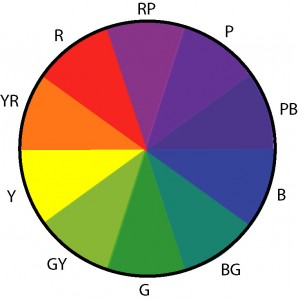
The Munsell color system is more complex because it defines all three visual properties of color: hue, saturation, and value. It is used by advanced artists to increase your understanding of color.
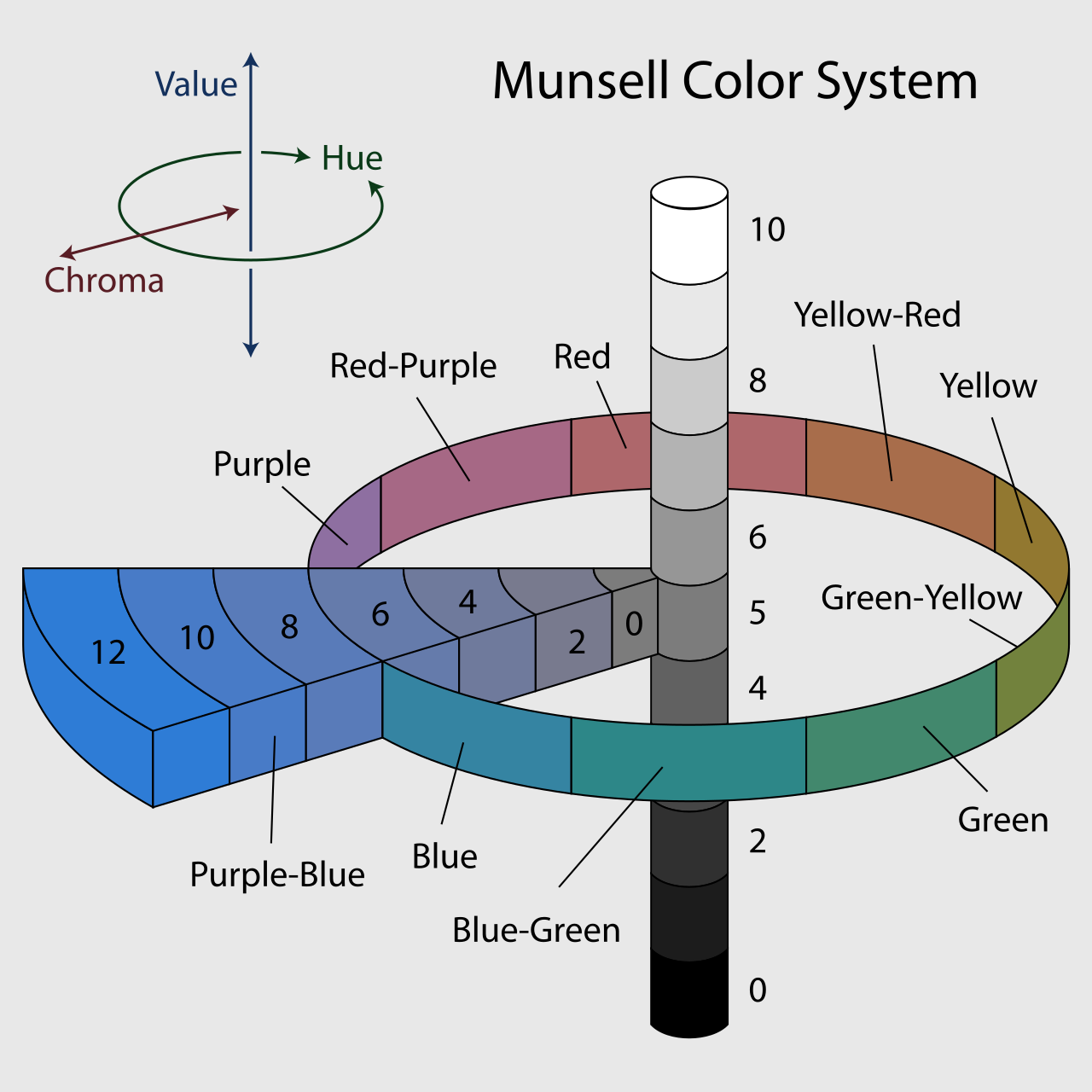
Learn more about the:
Visual elements of art — value
As we described above, color has three components: hue, saturation, and value. The visual element of value is how light or dark a color is, from white through gray to black. In the Munsell color system, a value 0 is black and a value 10 is white. Without a good understanding of value, you will never achieve realism in your paintings.
For the sake of convenience this course uses the numbers one to refer to black and nine to refer to white, even though technically speaking, in the Munsell scale these numbers would refer to ‘almost black’ and ‘almost white’ respectively.

Learn more about value in art and why it is important to understand it.
Visual elements of art — line
A line visual element is a mark that join two points, and can be used to indicate direction or movement. For example, a line can be added to a drawing or painting to direct the viewer’s eye to a particular area of the painting, or to suggest a path to travel through to keep the viewer’s eye moving around the artwork. Lines can be straight or curved, or a even a combination of both.

A combination of lines are used to describe the outline of a regular shape, such as a square, circle, or triangle, or an irregular shape such as a blob.
Visual elements of art — shape
The visual element of shape can refer to one of two things:
- a two-dimensional area in a painting
- a two-dimensional object in a painting
What defines a two-dimensional area?
It is an area of a painting that from a distance is approximately the same color (same hue, value, and saturation) throughout.
Master paintings generally have:
- A very small number of shapes (of the order of 7- 20) of unequal size when viewed from a distance (some very large, some middle size, and some small ones, the smaller ones being in the focal areas).
- As you look more closely at the painting, the viewer notices that each of the small number of shapes you see when the painting is viewed from a distance are themselves further subdivided into a small number of unequal shapes.
In this painting by Joaquin Sorolla, you can see it is divided into three distinct shapes if you look at the different dark, light and medium areas of color.
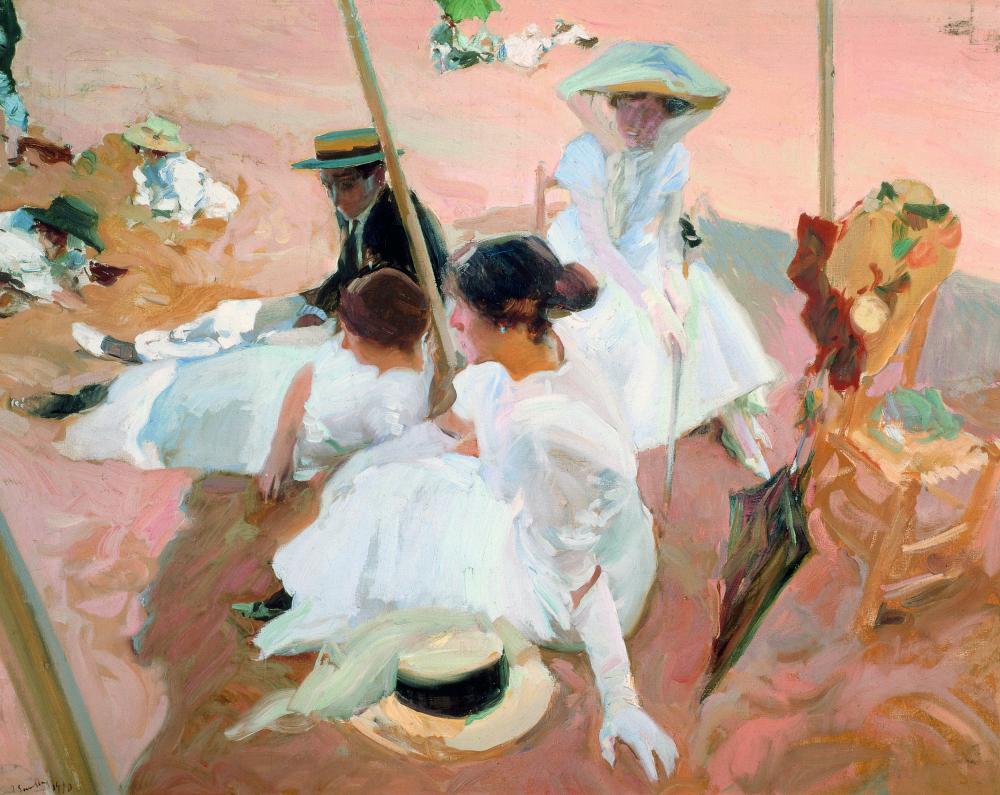
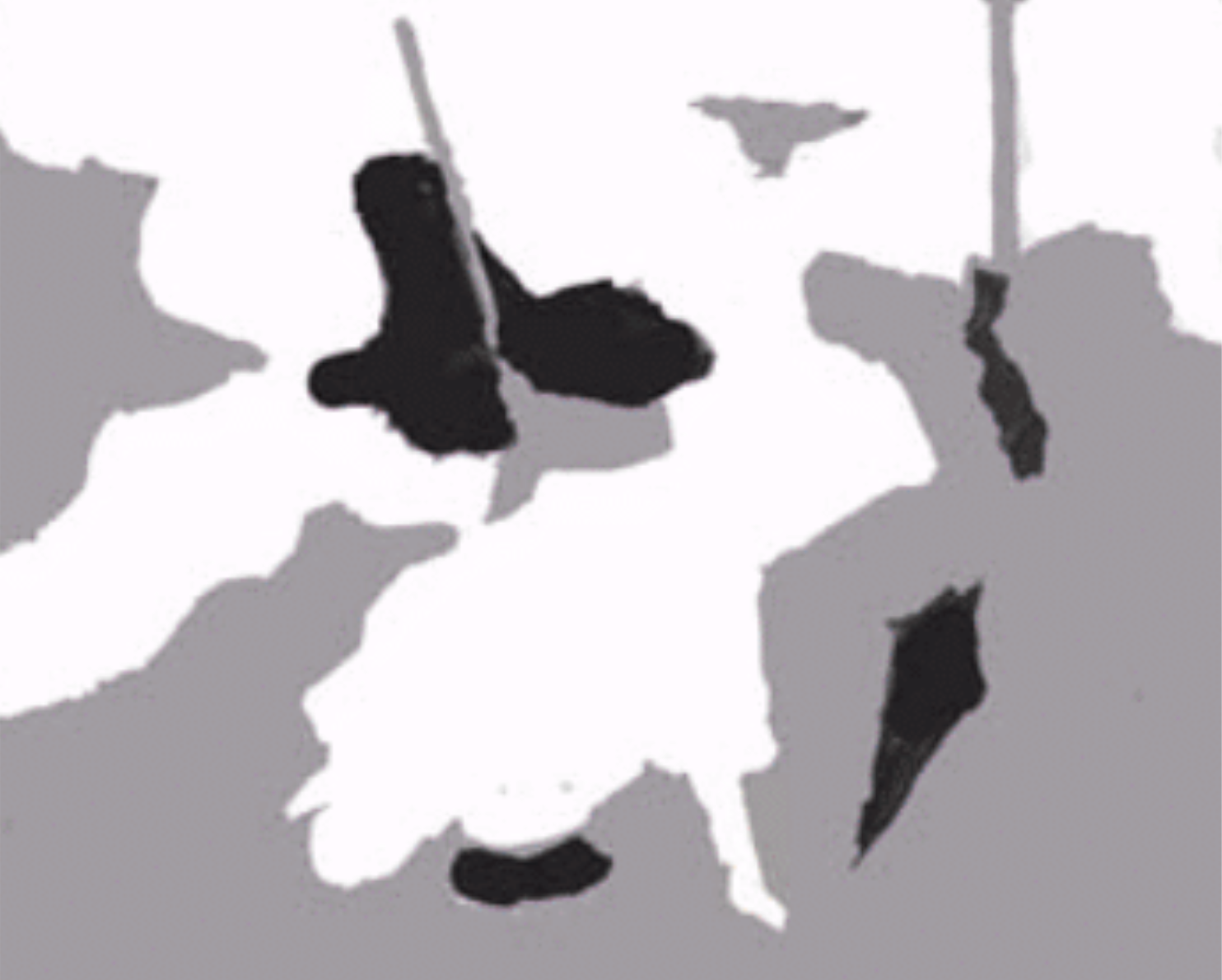
What defines a two-dimensional object?
A shape visual element can be a geometrical shape such as circles, triangles, rectangles, and squares. They have height and width but no depth.
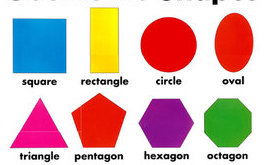
Shape visual elements can also be something more freeform, irregular, or organic, such as a blob, splatter, spiked shape.


Visual elements of art — form
Form is a three-dimensional object that has height, width and depth, such as cubes, spheres and cylinders. It is the physical three-dimensional appearance and structure of an object.




More complex objects can also be simplified in terms of its light and shade. You do this by learning how to break these complex visual elements down into one or more simple objects. This level of detail of form is sufficient for many parts of your paintings – for example, trees and people in the middle distance.
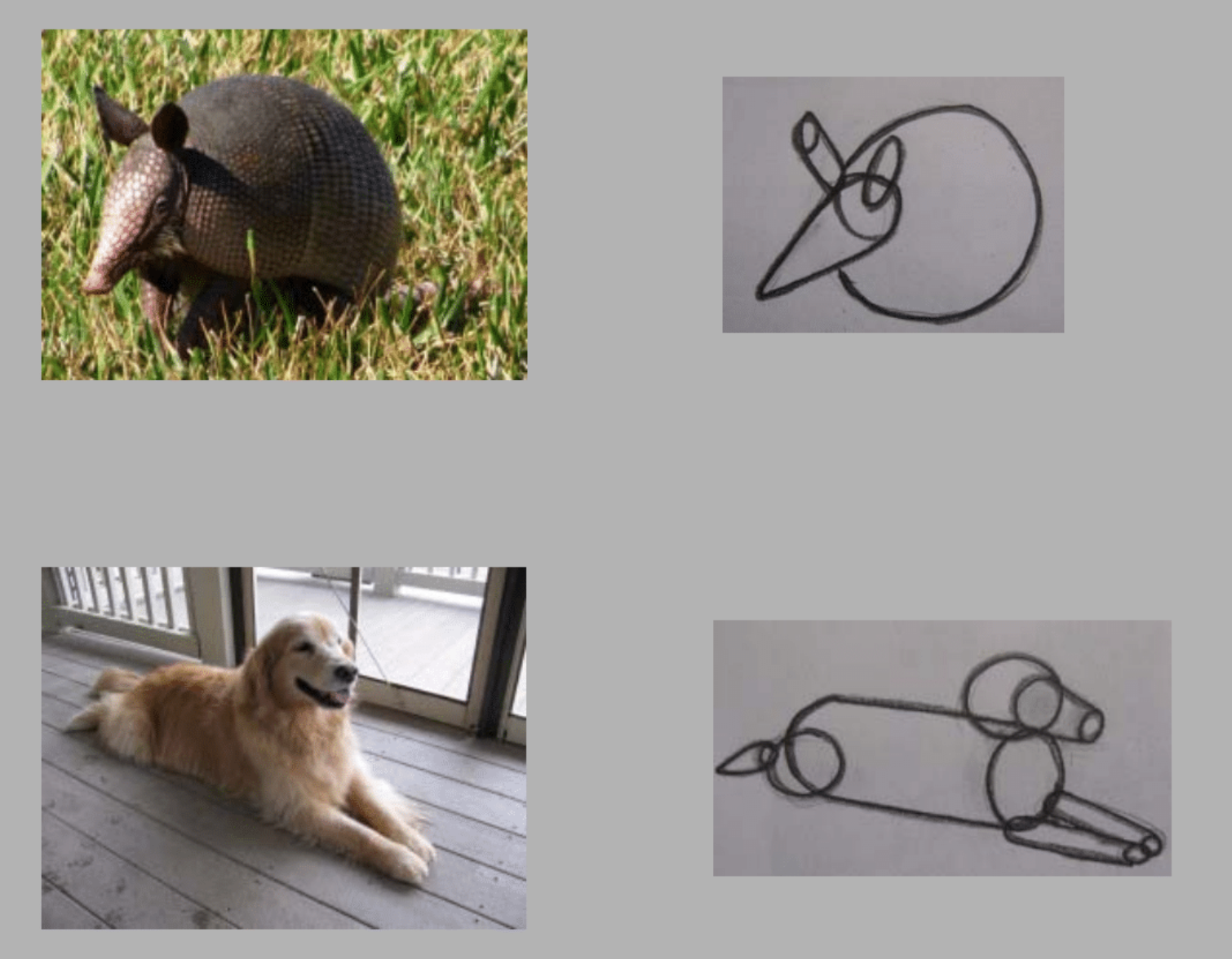
Read more about form in art and the 2 types of form
Visual elements of art — space
The visual element of space refers to the area between and around objects in a painting. When you have achieved a good feeling of space in your artwork, then the viewer can recognize what you are trying to capture.
There are two different types of spaces you can use for different effects. Positive space refers to the areas of the work with the main subject of the painting, while negative space is the space around the main subject. One principle that says that you should actively design the negative shapes to be beautiful shapes, and not let them happen as an automatic by product of drawing the positive shapes.
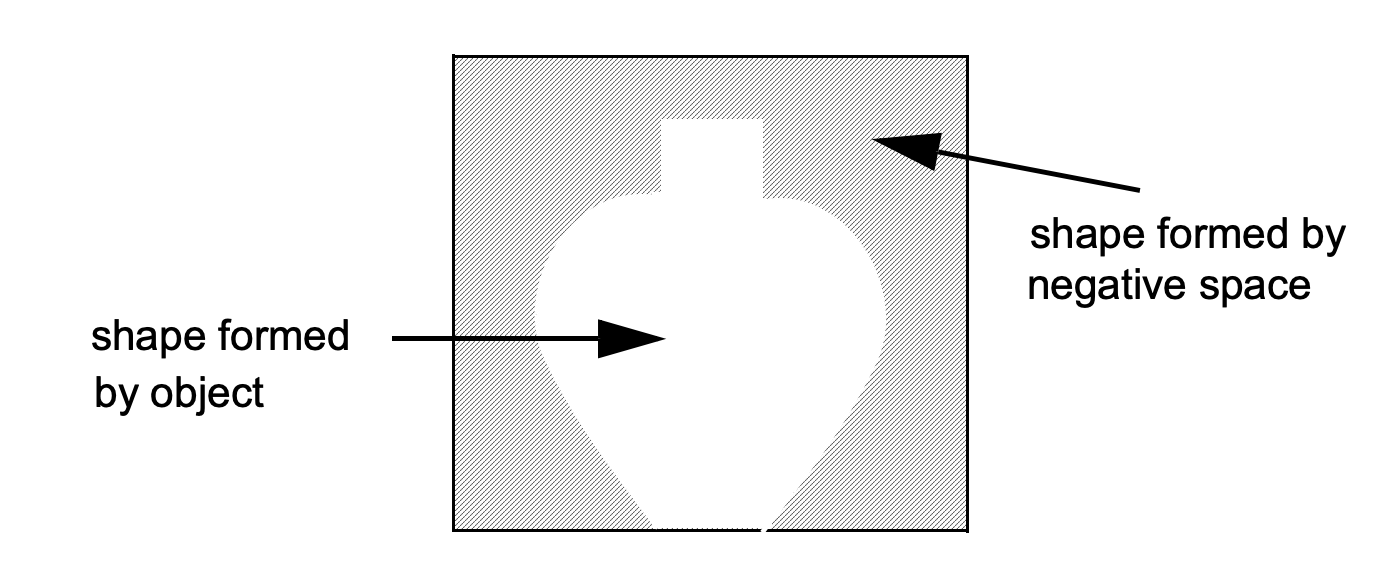
Visual elements of art — texture
Normally when we think of texture, we conjure up phrases like “soft as silk”, scratchy as a man’s stubble”, and “hard as rock”. Because painting and drawing are visual and not tactile, you have to represent objects and surfaces with your paint or pencil. Some artists add thick globs of paint to the canvas to emulate texture (such as rocks and waves), but this does not work for everything.
John Singer Sargent was a master at creating texture with a few brushstrokes. In these two figure paintings you can “feel” the softness of the satin and silk cloth, the fineness of the lace, the softness of the feather boa. Look carefully at the pearl necklace and you want to touch it to make sure is not real. With a lot of careful observation and masterly brushstrokes, you will be able to achieve the texture element of art in your paintings too.
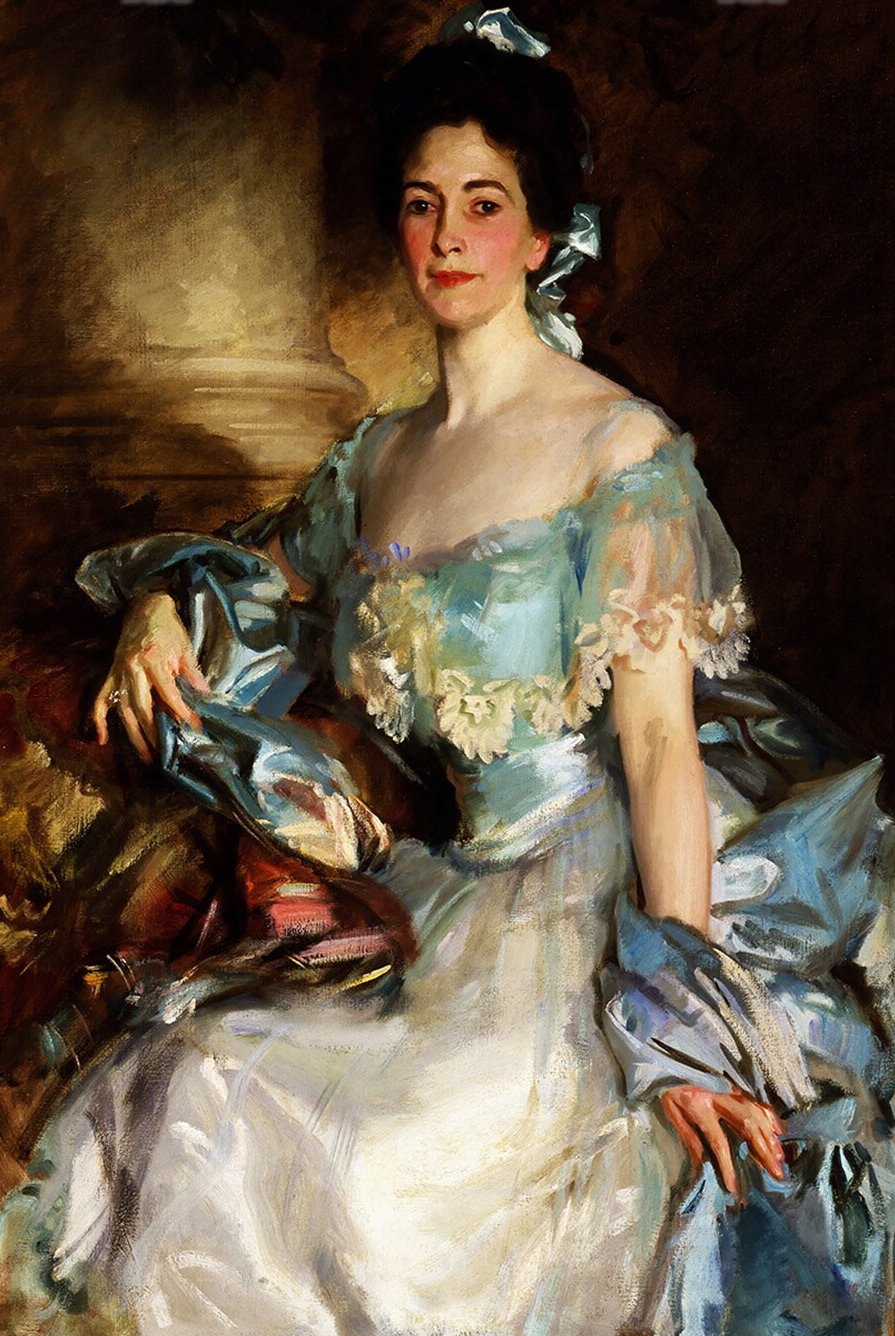
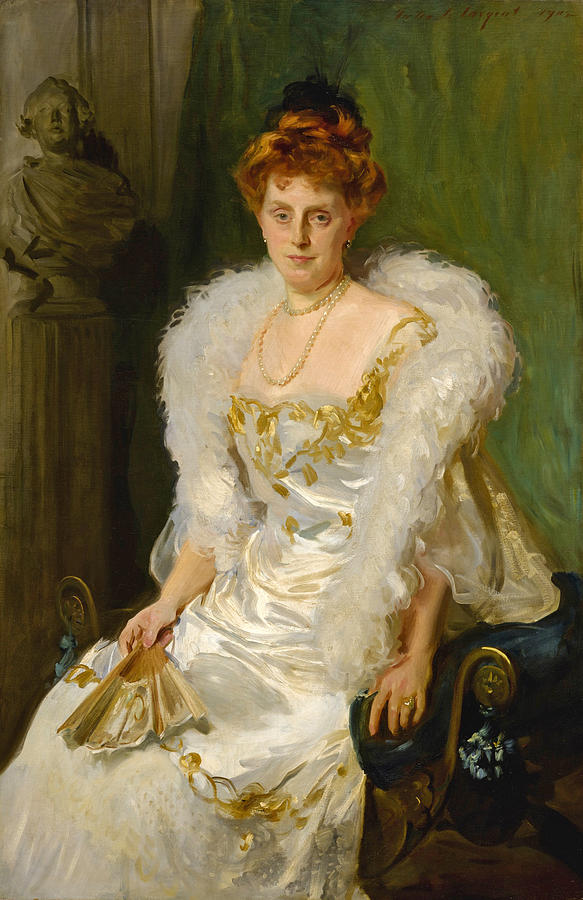
What are the 7 elements of art?
Composition is the arrangement of visual elements of art in any painting or drawing. There are many elements of art, but the 7 visual elements of art that are the most important ones to understand are; color, form, line, shape, space, texture, and value. If you do not understand these 7 basic elements of art, you will never reach a master skill level.
Why is it important to understand the 7 elements of art?
Learning how to apply each element of art in your paintings is an essential part of composition, and is the main factor that leaves an impact on your viewers when they look at your painting.
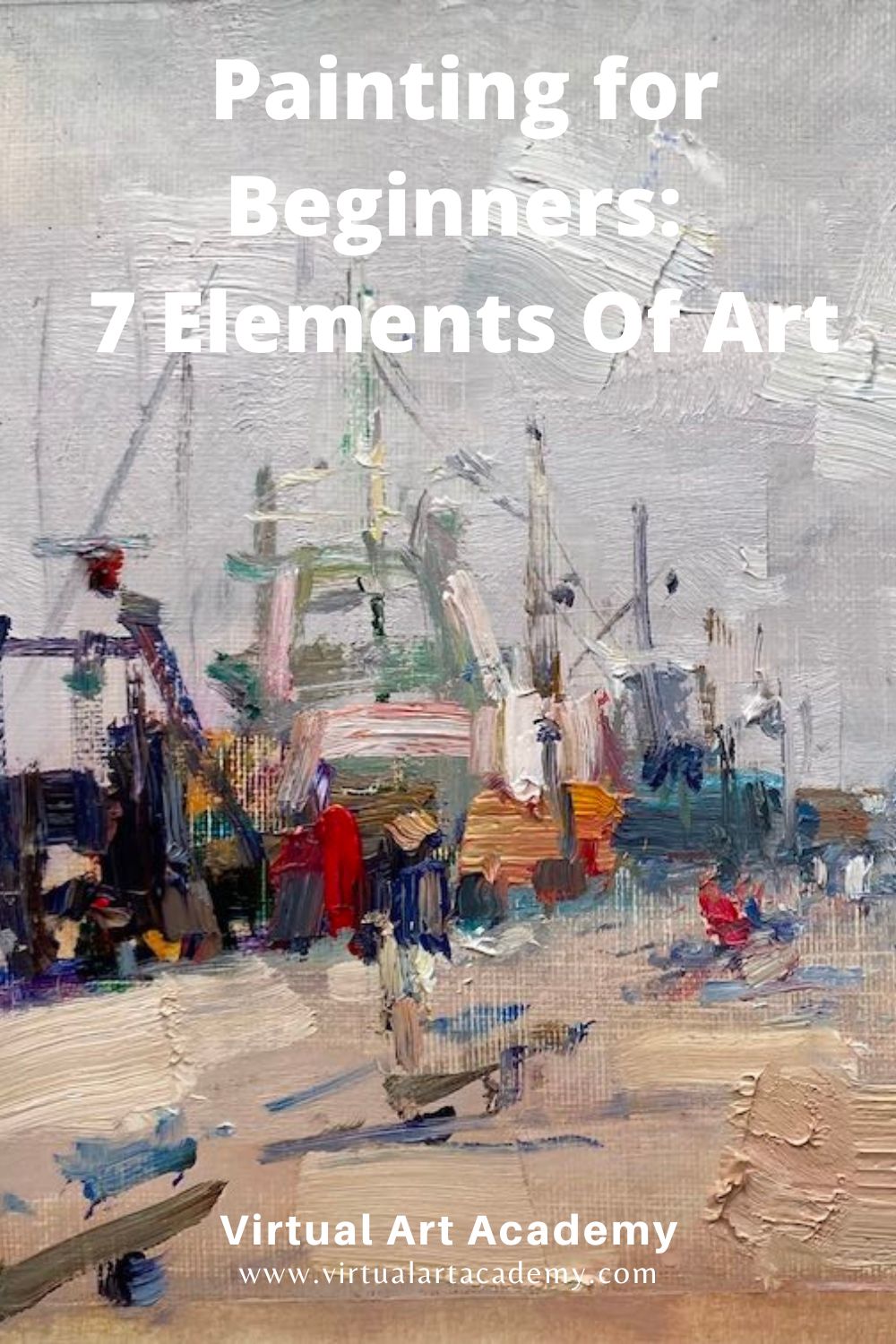
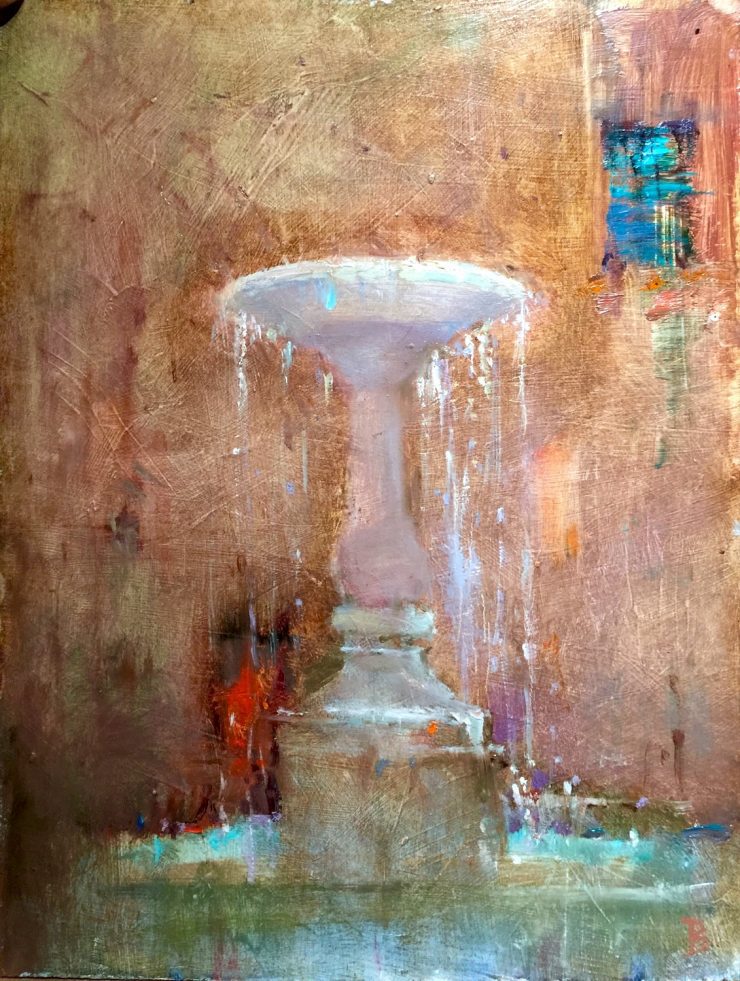
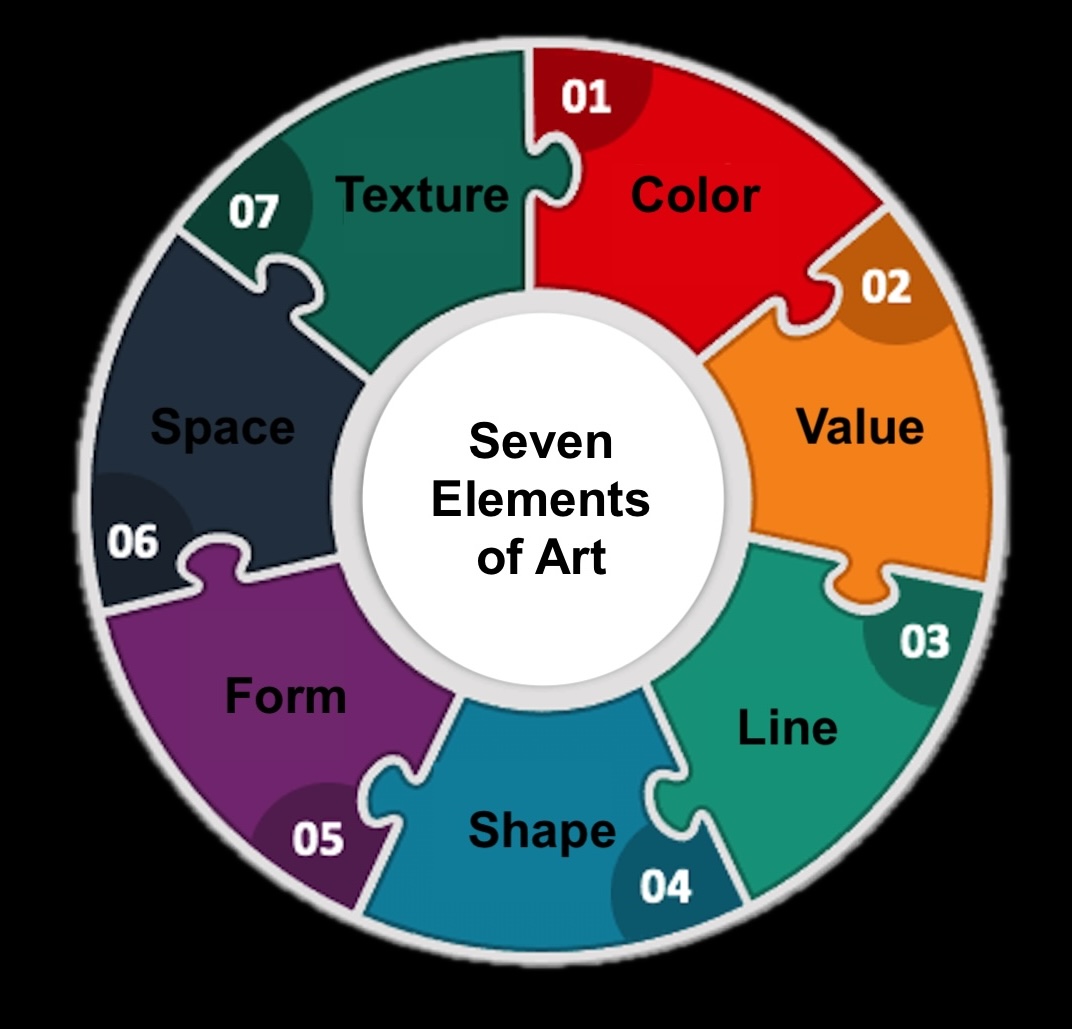
Tusen takk for at du dele forståelsen av disse emnene. Jeg blir nok mer kritisk i mine maleri heretter.
I read and I understand. I paint and the knowledge somehow escapes in the process. I think it must take a lot of years and a great teacher like you are to help a student become a real painter! I love reading how you explain it all . There is a lot to learn!
nice i can understand
Hello I have been painting for many years, I’m still enthusiastic.
I like your teaching approach to painting, I think I understand hue, value, & saturation because I understand it intellectually, but when I paint it’s obvious to me, the lessons haven’t sunk deeper. Thanks for your tuition much appreciated khemin🌹
I loved reading this succinct review on painting for beginners.